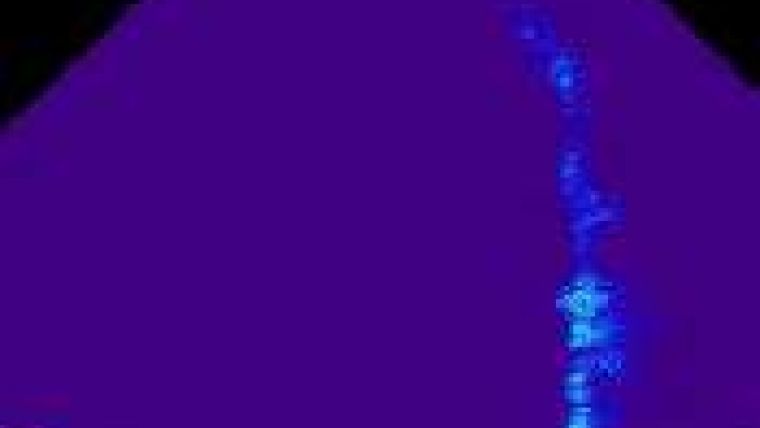Kongsberg FEMME Conference
A large portion of the hydrographic community came together at the thirteenth Kongsberg FEMME conference in Trondheim, Norway. Participants exchanged thoughts, ideas and experiences on hydrographic-related topics and Kongsberg subsea systems. Many new Kongsberg products were demonstrated, including the new Kongsberg EM2040 multi-beam echo sounder.
All the latest Kongsberg products and features were demonstrated by Kongsberg. In the spotlight was the new Kongsberg EM2040 multi-beam echo sounder. This new multi-beam echo sounder has new features such as dual swath per ping; roll, pitch and yaw stabilisation and near-field focusing.
Mid-water and backscatter information are finding their ways into the different disciplines of hydrographic and oceanographic surveying. New challenges also arise with these new sources of information; how to handle the data quantity of these new sources of information. As Jonathan Beaudoin explained nicely the recorded data sizes simply increases with a magnitude of 2 - 8 (depending on water depth and angular sector) when one would simply start recording mid-water column data. Solutions could be found by "simply" increase hardware storage capacity, though Jonathan Beaudoin demonstrated that with JPEG2000 the file size of mid-water column data could potentially be smartly reduced without loosing (much) detail.
With the introduction of Geocoder new possibilities became available for the hydrographic industry to visualise the backscatter data in such a way that it can be interpreted easily and sediment qualifications can be determined. Although Geocoder gained a lot of popularity since it came to the market, there are several other solutions for backscatter corrections as well. One of the speakers indicated: many years ago Kongsberg already kindly provided us with the capabilities to record backscatter data, though at the time we didn't know yet exactly what to do with this freely delivered information. Now we managed to get sensible end-results, which are useable for interpretation.
On the other hand another speaker commented that while the intensity values from a Kongsberg multibeam echosounder are constant the different processing solutions on the market are giving different results.
Geocoder, developed by CCOM / UNH, was apparently not exactly designed in a constructive manner. Thus CCOM is now undertaking a redesign and is going to upgrade the Geocoder technology to make it more sustainable and maintainable algorithm. The new developments on Geocoder will be more based on a modular design.
The Canadian Hydrographic Service had an interesting case study on backscatter as well, where the backscatter from multiple Kongsberg sources was compared. A challenge would be for the future is how to correct backscatter intensities from different sensors, so that the information can be compared and merged. Another interesting point covered is a method to calibrate the backscatter making use of the FFCPT.
Related to this, the French research organisation Ifremer demonstrated an interesting software tool, similar to Google Earth to merge bathymetric data, water column data, backscatter data and even sub-bottom data within a 3D environment. Since they have ambitions to commercialize the technology we might get an interesting new player on the table, with new capabilities.
With all these new technologies, capabilities and solutions we almost tend to forget the basics for a good survey. Installing a multi-beam echo sounder on a vessel of opportunity for shallow water surveys already is a challenge, though it is always astonishing to see how Kongsberg manages over and over successfully to install multi-beam systems on ocean-going vessels and above all the enormous ice breakers. This requires an enormous experience, know-how and craft man ship to install these kind of systems. Several speakers demonstrated what can go wrong during mobilisation deep water multibeam systems and what it takes to install the right gear.
On the other hand John Hughes Clarke, University of New Brunswick, demonstrated on the Squamish Delta research project, with a Kongsberg survey launch, what the impact can be on your analyses when you don't have all the settings right during your survey. Especially when you are surveying in a remote area with high mountains easily your GPS data quality can be downgraded due to the bad reception. Or a surface sound speed meter mounted, due to practical reasons, with a slight offset and thus influencing the sound velocity corrections possibly negatively. If one doesn't realize this afterwards then this could influence your analyses, especially when you are looking at small margings and conclusions drawn from the survey results.
During the FEMME conference, users are brought together and third party vendors were available to share experiences and issues. The buzz was around that QPS and IVS were in the final stages of the takeover. According to QPS the activities of IVS will remain as they are, though the workflows of both packages will be better integrated to create a smooth workflow from acquisition to processing. Those having another workflow and are using a product from either IVS or QPS will be supported as before.
Another interesting item demonstrated was the integration of CARIS Bathy DataBASE directly with Kongsberg SIS software module. Online recorded hydrographic data is directly available within CARIS Bathy DataBASE without the necessity for processing. This is another example how Kongsberg is providing fast turn-around solutions to hydrographic community. Both Kongsberg multi-beam systems and Kongsberg SIS are providing better algorithms and solutions to produce clean data. This is an interesting development and maybe this might the first steps of making multi-beam processing absolute?!
Kongsberg also highlighted the new features in their SIS software of which the dynamic grid capability should definitely be highlighted as well as the possibility to display track lines and coverage from other surveys.
During the conference, Kongsberg demonstrated to be a an expert in seafloor mapping. Although there were many requests for improvements there were also as many compliments for the Kongsberg products, the expert team behind these products and how they handle the all requests professionally.














